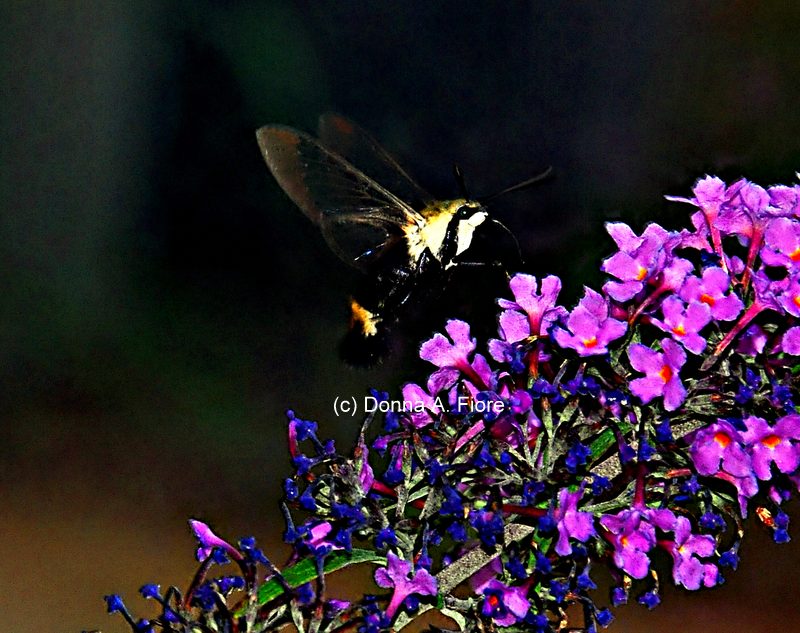LOPATCONG, NJ
This wildlife photo is of a Hummingbird Moth captured in the town of Lopatcong, New Jersey. Camera gear used in this hummingbird moth capture was a Nikon D200
The Hummingbird Moth, unlike most moths, is seen on clear, sunny days. Many people do confuse it with hummingbirds because of its coloration and how it moves. Hummingbird Moths grow up to two inches long. They have an olive-green body with red bands across their abdomen. Tufts of hairs from the end of the abdomen look a lot like feathers. The wings of this moth are mostly clear, sometimes with some red near the body. Hummingbird Moths live in fields, gardens, and forest edges. and forest edges.
Hummingbird moths are rather plump; the tip of their tail opens into a fan. They are usually of a rich reddish brown color, at least in part. Like all Lepidoptera their wings are covered by scales; some species lose many of the scales from patches on their wings, so they are called clearwing hummingbird moths. Like most moths they have a very long tongue which they carry rolled under their chins and that they use to reach the nectar of long-necked flowers. Such nectar is inaccessible to many other flower visitors, so it seems that these flowers prefer long tongued pollinators and try to keep the others away.
Adult Hummingbird Moths feed on nectar from many different flowers, just like hummingbirds. Some of their favorites include: Japanese Honeysuckle, Red Clover, Highbush Blueberry, thistles, wild roses, and blackberries.
Hummingbird Moths use a long, thin, needle-like mouthpart called a proboscis to eat. The proboscis stays coiled up like a garden hose until it is time to use it. When the moth approaches a flower, it uncoils its proboscis and dips it deep into the flower where the nectar is.
